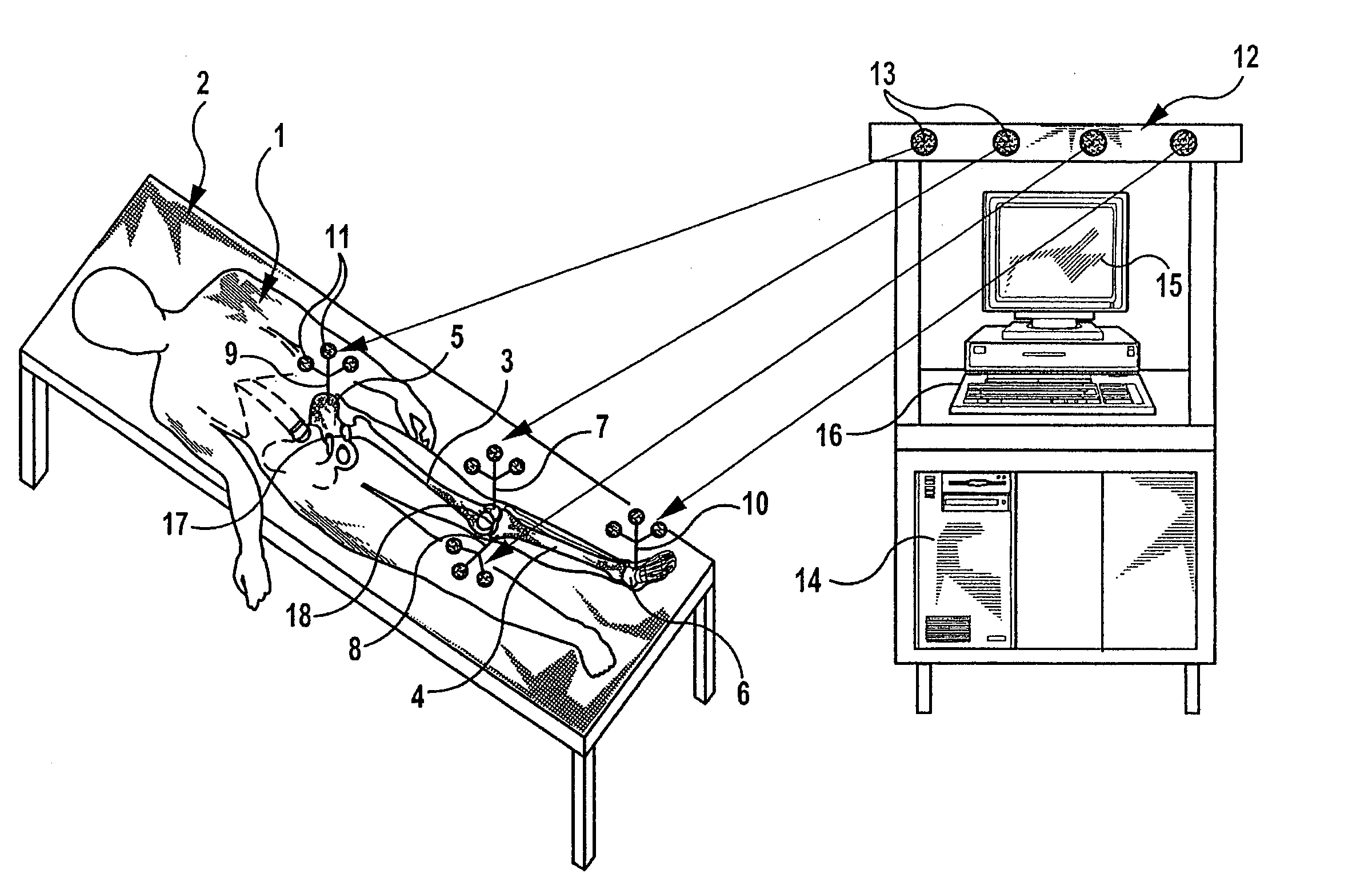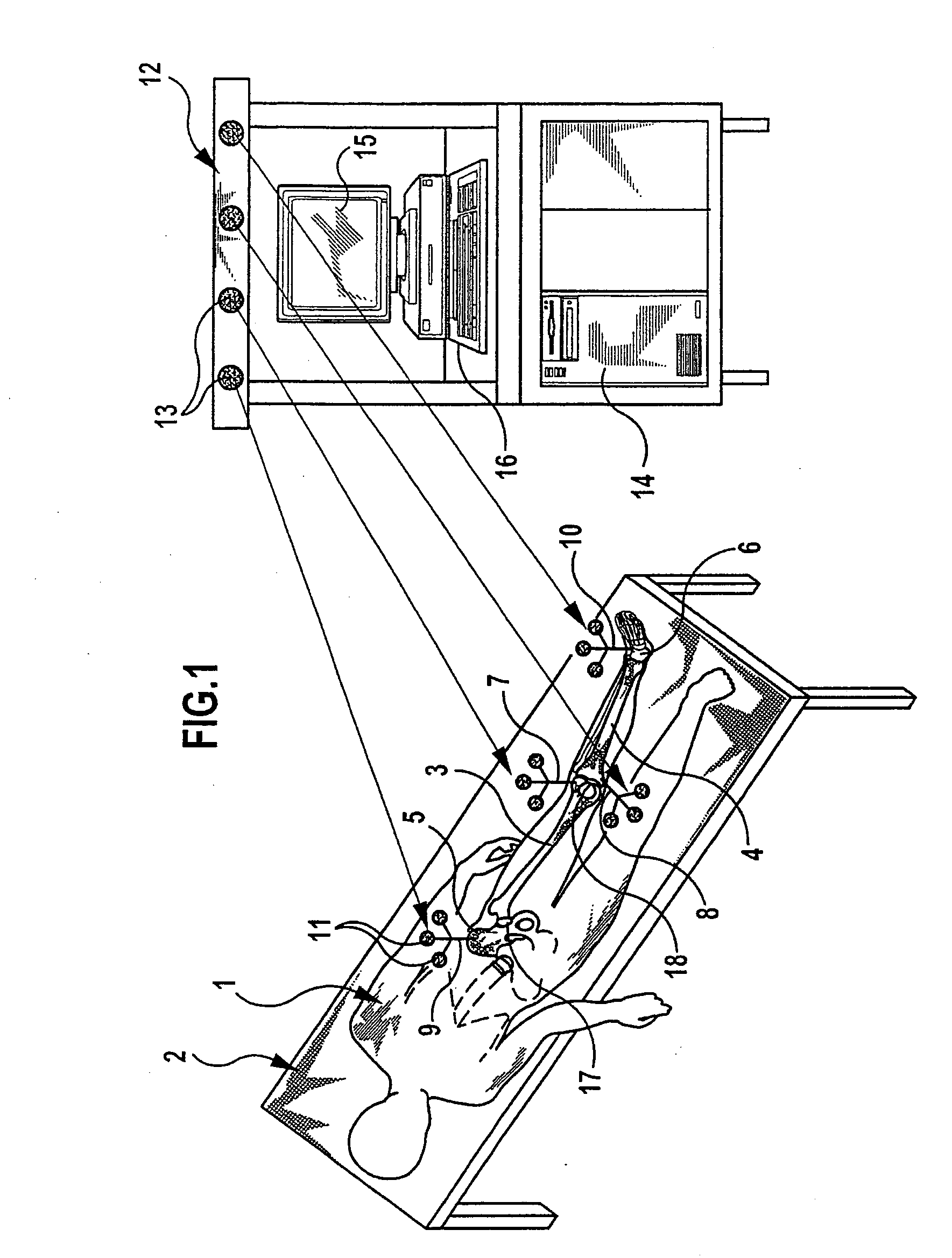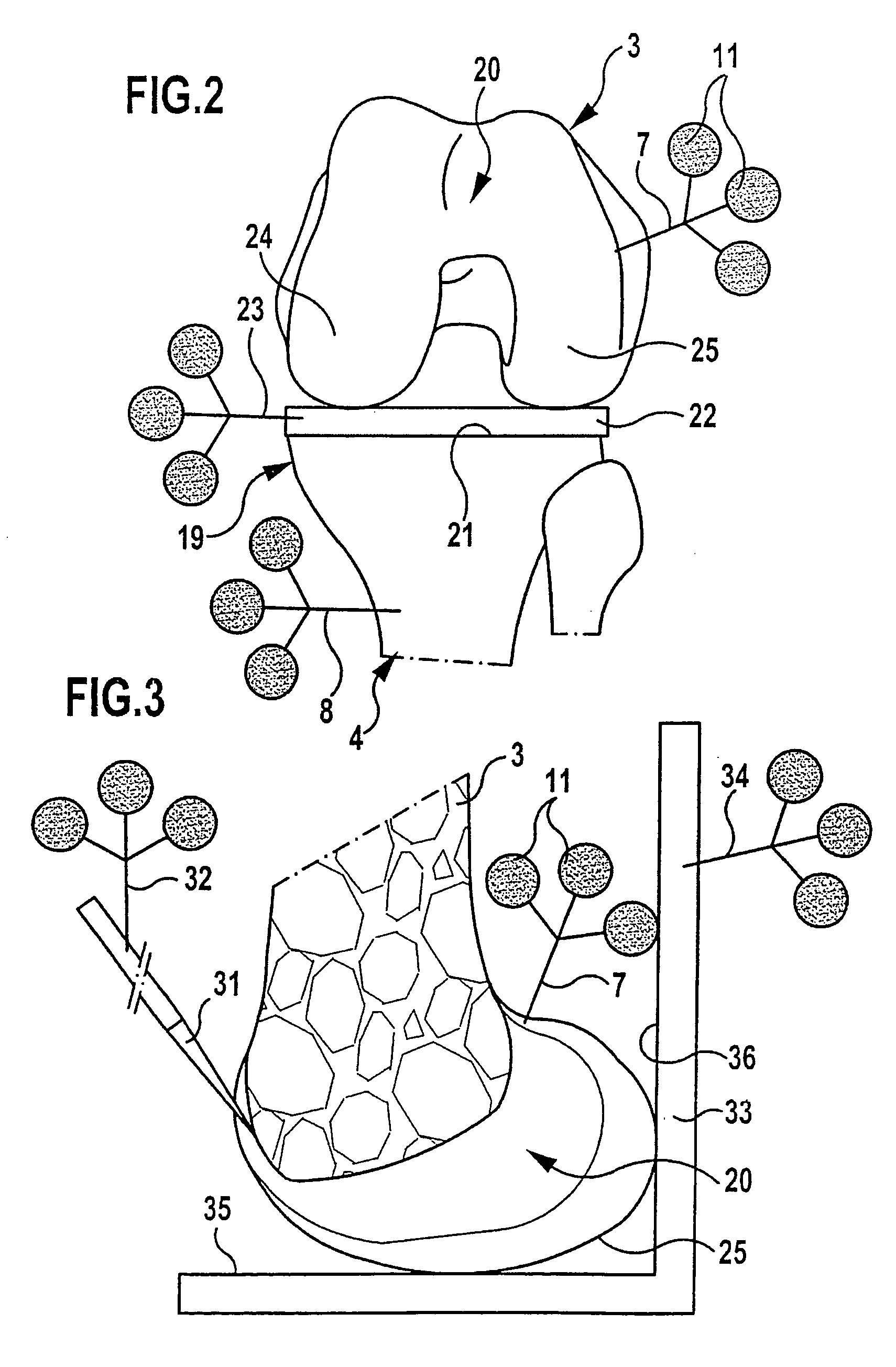Method and device for determining the position of a knee-joint endoprosthesis
- Summary
- Abstract
- Description
- Claims
- Application Information
AI Technical Summary
Benefits of technology
Problems solved by technology
Method used
Image
Examples
Embodiment Construction
[0054] To replace a knee joint by a knee-joint endoprosthesis, the patient 1 is placed on an operating table 2, and the knee joint is opened up in a way known per se. Marking elements 7, 8, 9 and 10 are rigidly fixed at least to the femur 3 and to the tibia 4, and preferably also to the hip bone 5 and to the foot 6 of the patient, for example by screwing in a bone screw. Each of these marking elements carries three spaced-apart emitters 11, which may be active radiation transmitters for ultrasound radiation, infrared radiation or similar radiation, or else passive reflection elements for such a radiation, which then reflect, and thereby emit, radiation impinging on them. These marking elements operate together with a navigation system 12 with a number of radiation receivers 13, which establishes the spatial position and orientation of the marking elements and feeds data corresponding to this position to a data processing system 14. The data processing system 14 is equipped with a di...
PUM
 Login to View More
Login to View More Abstract
Description
Claims
Application Information
 Login to View More
Login to View More - R&D
- Intellectual Property
- Life Sciences
- Materials
- Tech Scout
- Unparalleled Data Quality
- Higher Quality Content
- 60% Fewer Hallucinations
Browse by: Latest US Patents, China's latest patents, Technical Efficacy Thesaurus, Application Domain, Technology Topic, Popular Technical Reports.
© 2025 PatSnap. All rights reserved.Legal|Privacy policy|Modern Slavery Act Transparency Statement|Sitemap|About US| Contact US: help@patsnap.com



